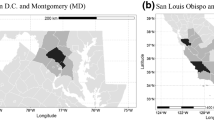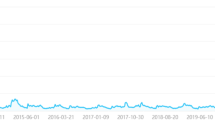Abstract
One of the barriers to the effective use of a deposit-refund system is the burden borne by the system management actor, such as the government. The burden can be considered to increase if the system management actor collects unredeemed deposits which the system occasions. The deposit system of the state of California in the United States adopts this collection scheme to manage beverage containers. This article considers the burden of the system management actor by understanding the actual situation in the California beverage container deposit system. A variety of elements contributing to the burden was observed; however, the collection of unredeemed deposits is related to the suppression of illegal activities in the deposit system. Therefore, this article also considers the burden from the viewpoint of illegal activities and crackdowns. My conclusions with regard to the system management actor’s collection of unredeemed deposits are as follows: the collection requires that the right information regarding sales and returns be collected and the system management actor needs to verify whether the information is correct, e.g., by examining the business records of system participants.
Similar content being viewed by others
References
Numata D (2006) Current situation and future tasks of lead-acid battery deposit-refund systems in the United States (in Japanese). Kokyo Kenkyu 3(2):198–220
Economic and Social Research Institute (1996) Cost-benefit analysis of an economic instrument for promoting recycling: policy simulation for introducing redemption systems (in Japanese). Econ Anal 147
Japan Productivity Center for Socio-Economic Development (2005) Report of actual situation of recycling of containers and packaging in foreign countries, mainly deposit-refund systems (in Japanese). Japan Productivity Center for Socio-Economic Development. Tokyo
California Resources Agency, Department of Conservation, Division of Recycling (2008) Biannual report of beverage container sales, returns, redemption, and recycling rates. (The latest document can be availabe at: www.calrecycle.ca.gov/BevContainer/Publications/.)
California Resources Agency, Department of Conservation, Division of Recycling (2007) Fact sheet (updated 7/9/07) (The latest document can be seen in http://www.calrecycle.ca.gov/BevContainer/ProgramInfo/FactSheet.pdf.)
California Resources Agency, Department of Conservation, Division of Recycling (2007) Historical reporting rates (distributor report, beverage manufacturer report) (The latest document can be available at: www.calrecycle.ca.gov/BevContainer/BevDistMan/Resources/RateHistory.pdf.)
Numata D (2008) How should we mitigate the suppliers’ resistance to deposit-refund systems? (in Japanese). Stud Region Sci 38(1):163–175
Author information
Authors and Affiliations
Corresponding author
Rights and permissions
About this article
Cite this article
Numata, D. On illegal activities in the California state beverage container deposit system. J Mater Cycles Waste Manag 12, 314–320 (2010). https://doi.org/10.1007/s10163-010-0303-z
Received:
Accepted:
Published:
Issue Date:
DOI: https://doi.org/10.1007/s10163-010-0303-z




